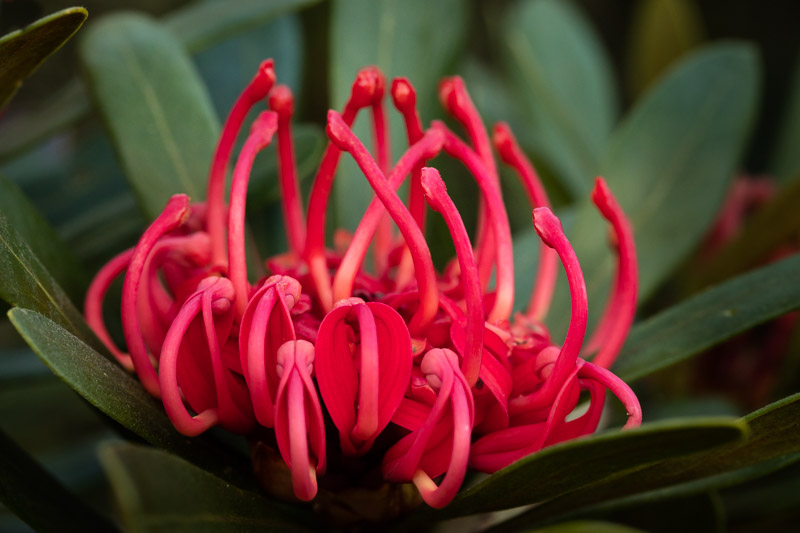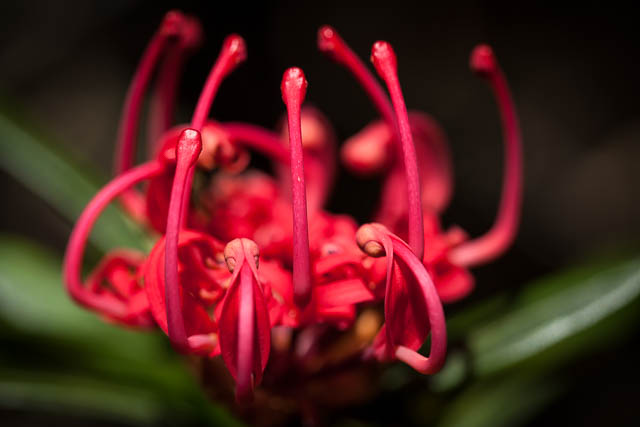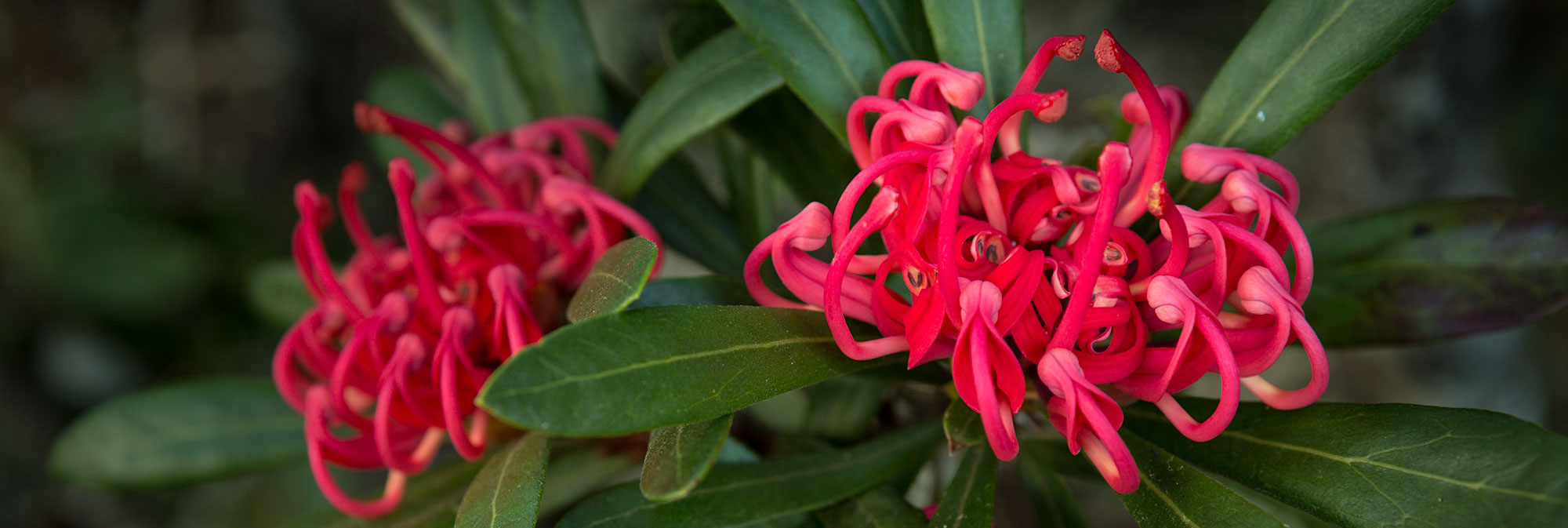Tasmanian Waratah
– a bright and striking feature of the Tasmanian landscape in summer.
The Tasmanian Waratah grows in the sub-alpine woodlands around the state. It is fairly widespread around the state, commonly at altitudes of around 1,000m. See it in full bloom on kunanyi/Mt Wellington and in the Hartz Mountains National Park, Mt Field National Park, at Lake St Clair and Cradle Mountain as well as in other mountain forest and sub-alpine habitats throughout Tasmania.
The botanical genus ‘Telopea’ is Greek which means ‘seen from afar’. The Tasmanian waratah (Telopea truncata) is endemic to Tasmania but is a close relative to the NSW Waratah (Telopea speciosissima) – both are easily spotted from quite a distance!
The name Waratah was given to the plant by the Dharug tribe of the Blue Mountains region, later adopted by the early European settlers in NSW and then carried over by early Tasmanian settlers.
A few facts about the endemic Tasmanian Waratah:
- It is in the Proteaceae family and one of five species in the genus Telopea.
- The flower head is made up of around 15-30 flowers, loosely clustered to form its distinctive shape.
- Commonly they are a vibrant red in colour but on rare occasions they may be pink, white or even yellow (we’ve only seen red ones ourselves).
- It flowers from around November through to January but may start to bloom as early as October in some areas (as we have observed in the past).


Photographing the Tasmanian Waratah when in full bloom
Whether from a distance or close up, you want the waratah flower to look vibrant and sharp in your photos. Here’s a couple of factors that are worth considering…
- Position – you and the flower. Flowers are often found roadside or trackside and may be facing a direction not conducive to a good photo. You’ll often find several on one shrub so they may crowd each other too. The shrub might be off the track and in a difficult location to access.
- Distracting features – you’ve found a shrub full of flowers but perhaps the flower that is easiest to photograph (because of its position) has distracting features about it. Look for flowers that are in good condition and will be pleasing to the eye in your photo.
- Photographing red subjects is often challenging – depending on your camera the colour vibrancy in your photo may appear unnatural and not as you see it with own eyes. There’s various in-camera settings that you can adjust so you can maintain the vibrancy of the flower in your photo. In post-processing you may adjust the colour and saturation to restore the colour vibrancy and saturation to match the way you observed the flower in its natural habitat.
See (and photograph) the Tasmanian Waratah in its full splendour
Tasmanian Waratah can be seen during a private outdoor photography tuition session or on a photo-oriented tour in November/December with an itinerary that includes kunanyi/Mt Wellington, Mt Field National Park, Hartz Mountains National Park or Lake St Clair. It truly is a spectacular sight to see. Or get in touch with us and we’ll create a tailored itinerary for you.







Hey my waratah is only halfway through the “bud phase” at this stage it looks like it won’t flower til May , I live in North west Tasmania at sea level ? Please give wisdom
Thank you for your comment however our expertise doesn’t include the wisdom you seek on this occasion. In the wild the Tasmanian Waratah blooms in summer so my thought is that it would be unseasonal if it blooms now (if it’s a Tasmanian Waratah anyway). I recommend that you visit a local nursery who I’m sure will have far more knowledge to impart on this topic. Good luck and I hope you see your waratah blooming in the near future. Coreena